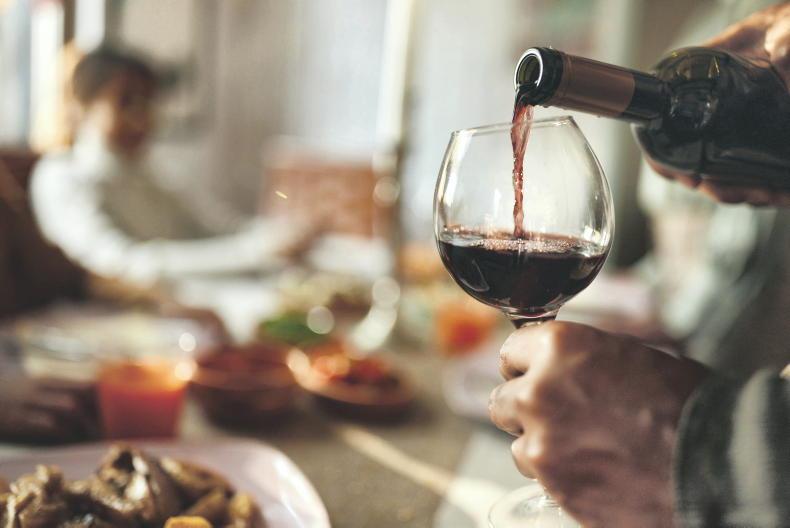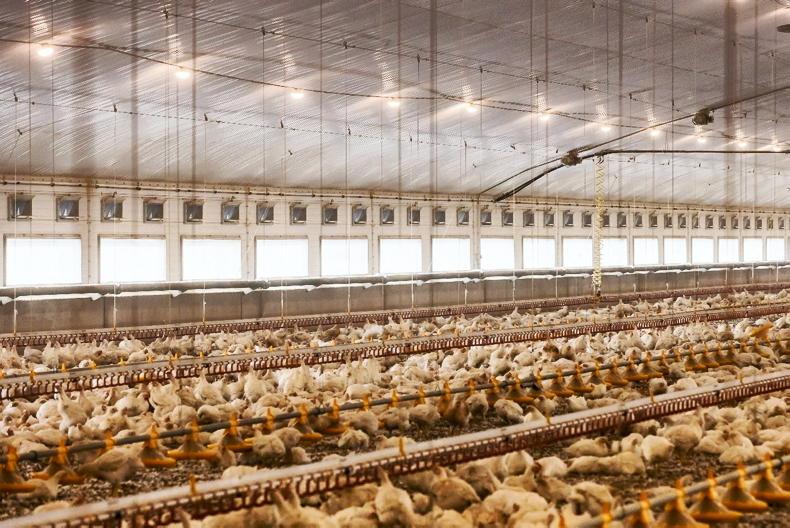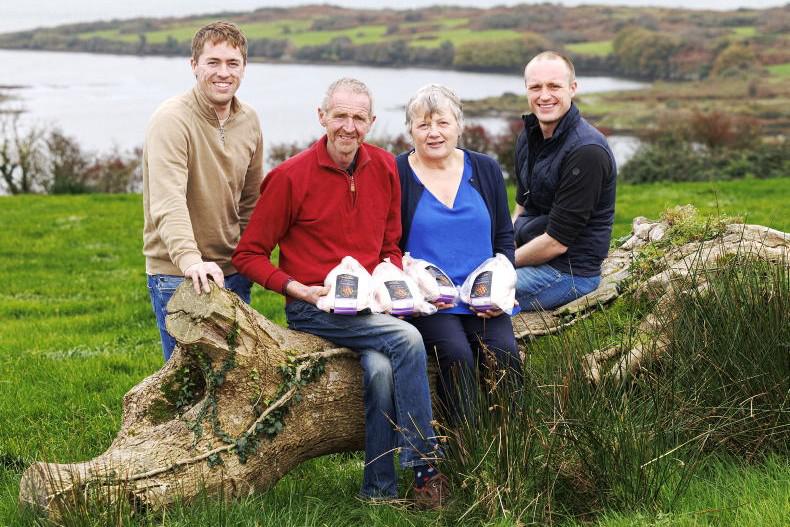This winter there has been a record high in the outbreak of the influenza virus around Ireland. With strains so severe that even though the typical symptoms (including fever) may manifest over for a few days, many who’ve been struck by it claim it takes many weeks to fully recover.
It is normal to have a temporary loss of appetite while the flu virus is upon you, however, a good fluid intake is always vital, especially with the presence of a high temperature, as an increased temperature has the potential to put serious demands on the body and there can be a chance of dehydration if sufficient fluids aren’t replaced. Water is most beneficial, but herbal teas can also be consumed, if tolerated.
Post-viral fatigue can last for four to six weeks after an infection has subsided
Once the flu virus has initially subsided it’s important to eat nutritiously, but lightly to avoid nausea. Even though in most circumstances the symptoms of the flu will have eased completely within a couple of weeks, which allows for a normal diet to be resumed, the associated fatigue or tiredness can last considerably longer.
Post-viral fatigue can last for four to six weeks after an infection has subsided, so it’s important to give yourself sufficient time to recover and recuperate before throwing yourself back into normal day-to-day life.
As your body is attempting to build back up your immune system, it’s important to take plenty of rest, and sleep as much as you need to. Eating fresh and wholesome foods, such as fruit and vegetables, which are packed with vitamins and minerals, can help with your recovery, as well as giving you a much-needed boost of energy.
Fresh smoothies and vegetable soups are a great way to easily include a few extra portions of fruit or vegetables into your daily diet
Oranges, kiwis, pineapples, strawberries, peppers and broccoli all boast impressive levels of virus-fighting, antioxidant-rich vitamins and mineral, including vitamin C. Fresh smoothies and vegetable soups are a great way to easily include a few extra portions of fruit or vegetables into your daily diet. Vitamin D also helps to maintain a healthy immune system, and it can be found plentifully in eggs, mushrooms and oily fish, such as salmon, trout and sardines. It’s important to avoid or limit processed sugar-heavy foods which will zap you of energy and ultimately leave you feeling more unwell.
Most flu-like symptoms should resolve and begin to improve within a week
Taking plenty of rest and eating nutrient-laden foods should help to speed up your recovery after a flu virus. Most flu-like symptoms should resolve and begin to improve within a week. If they don’t subside, or if they begin to improve and then get worse, or if you’re in any way concerned about your symptoms, you should contact your doctor for advice.
Harissa-glazed fish on a bed of spiced quinoa with broccoli
Protein-rich foods help in the repair of damage to muscles and tissues in the body, making them especially beneficial when recovering from an illness.
Quinoa and cod or pollock are good sources of lean proteins. This lightly spiced quinoa dish is so versatile. In place of the fish it can easily be paired with chicken.
Drizzle of olive oil
2 x 200g firm white fish fillets, such as cod, pollock or haddock
1 tbsp harissa
200g quinoa
1 tsp ground cumin
1 tsp ground coriander
Zest of 1 lemon
450ml vegetable stock
175g tender stem broccoli
Handful of fresh coriander, roughly chopped
½ fresh red chilli, finely sliced
1 Preheat the oven to 200°C (fan 180°C/gas mark 6).2 Drizzle a little olive oil onto the base of an ovenproof dish.3 Place the fish on a plate and evenly brush them with the harissa. Place in the dish, and bake in the oven for approximately 15 minutes, or until cooked through.4 Add the quinoa, the ground cumin and coriander, and the zest of half of the lemon to a medium sized saucepan. Pour over the boiling stock. Bring back to the boil and then reduce the heat, cover and simmer for about 15 minutes, or until the stock has fully absorbed. Fluff the cooked quinoa with a fork.5 Steam the broccoli for about five minutes, drain and cover to keep warm.6 Once the quinoa is cooked, transfer to a large bowl and fluff with two forks. Stir through the fresh coriander and red chilli. 7 Divide the quinoa between two plates, top with the cooked fish, add the broccoli, sprinkle over the remaining zest of lemon and serve immediately. Roasted red pepper hummus & crudités

Roasted red pepper hummus & crudités.\ Nessa Robins
Chickpeas are a good source of protein, minerals and soluble fibre. This hummus will keep well for at least three days in a sealed container in the fridge. Crudités are sliced vegetables, usually used for dipping in a sauce.
For the hummus:
1 roasted red pepper, from a jar
1 can of chickpeas, drained and rinsed
Juice of ½ lemon
1 garlic clove, crushed
1 tsp smoked paprika
1 tbsp Greek yoghurt
1 tsp sugar
50ml olive oil
For the crudités
Carrot, cucumber and radishes; washed, peeled and cut into ready-to-eat slices
1 Place all the ingredients for the hummus into a mini chopper or a food processor. Blitz until smooth.2 To serve, place in a bowl and sprinkle over a dusting of smoked paprika. Serve alongside some crudités and breadsticks.
Read more
Home Nurse: detox December away
Gluten-free Christmas cakes
This winter there has been a record high in the outbreak of the influenza virus around Ireland. With strains so severe that even though the typical symptoms (including fever) may manifest over for a few days, many who’ve been struck by it claim it takes many weeks to fully recover.
It is normal to have a temporary loss of appetite while the flu virus is upon you, however, a good fluid intake is always vital, especially with the presence of a high temperature, as an increased temperature has the potential to put serious demands on the body and there can be a chance of dehydration if sufficient fluids aren’t replaced. Water is most beneficial, but herbal teas can also be consumed, if tolerated.
Post-viral fatigue can last for four to six weeks after an infection has subsided
Once the flu virus has initially subsided it’s important to eat nutritiously, but lightly to avoid nausea. Even though in most circumstances the symptoms of the flu will have eased completely within a couple of weeks, which allows for a normal diet to be resumed, the associated fatigue or tiredness can last considerably longer.
Post-viral fatigue can last for four to six weeks after an infection has subsided, so it’s important to give yourself sufficient time to recover and recuperate before throwing yourself back into normal day-to-day life.
As your body is attempting to build back up your immune system, it’s important to take plenty of rest, and sleep as much as you need to. Eating fresh and wholesome foods, such as fruit and vegetables, which are packed with vitamins and minerals, can help with your recovery, as well as giving you a much-needed boost of energy.
Fresh smoothies and vegetable soups are a great way to easily include a few extra portions of fruit or vegetables into your daily diet
Oranges, kiwis, pineapples, strawberries, peppers and broccoli all boast impressive levels of virus-fighting, antioxidant-rich vitamins and mineral, including vitamin C. Fresh smoothies and vegetable soups are a great way to easily include a few extra portions of fruit or vegetables into your daily diet. Vitamin D also helps to maintain a healthy immune system, and it can be found plentifully in eggs, mushrooms and oily fish, such as salmon, trout and sardines. It’s important to avoid or limit processed sugar-heavy foods which will zap you of energy and ultimately leave you feeling more unwell.
Most flu-like symptoms should resolve and begin to improve within a week
Taking plenty of rest and eating nutrient-laden foods should help to speed up your recovery after a flu virus. Most flu-like symptoms should resolve and begin to improve within a week. If they don’t subside, or if they begin to improve and then get worse, or if you’re in any way concerned about your symptoms, you should contact your doctor for advice.
Harissa-glazed fish on a bed of spiced quinoa with broccoli
Protein-rich foods help in the repair of damage to muscles and tissues in the body, making them especially beneficial when recovering from an illness.
Quinoa and cod or pollock are good sources of lean proteins. This lightly spiced quinoa dish is so versatile. In place of the fish it can easily be paired with chicken.
Drizzle of olive oil
2 x 200g firm white fish fillets, such as cod, pollock or haddock
1 tbsp harissa
200g quinoa
1 tsp ground cumin
1 tsp ground coriander
Zest of 1 lemon
450ml vegetable stock
175g tender stem broccoli
Handful of fresh coriander, roughly chopped
½ fresh red chilli, finely sliced
1 Preheat the oven to 200°C (fan 180°C/gas mark 6).2 Drizzle a little olive oil onto the base of an ovenproof dish.3 Place the fish on a plate and evenly brush them with the harissa. Place in the dish, and bake in the oven for approximately 15 minutes, or until cooked through.4 Add the quinoa, the ground cumin and coriander, and the zest of half of the lemon to a medium sized saucepan. Pour over the boiling stock. Bring back to the boil and then reduce the heat, cover and simmer for about 15 minutes, or until the stock has fully absorbed. Fluff the cooked quinoa with a fork.5 Steam the broccoli for about five minutes, drain and cover to keep warm.6 Once the quinoa is cooked, transfer to a large bowl and fluff with two forks. Stir through the fresh coriander and red chilli. 7 Divide the quinoa between two plates, top with the cooked fish, add the broccoli, sprinkle over the remaining zest of lemon and serve immediately. Roasted red pepper hummus & crudités

Roasted red pepper hummus & crudités.\ Nessa Robins
Chickpeas are a good source of protein, minerals and soluble fibre. This hummus will keep well for at least three days in a sealed container in the fridge. Crudités are sliced vegetables, usually used for dipping in a sauce.
For the hummus:
1 roasted red pepper, from a jar
1 can of chickpeas, drained and rinsed
Juice of ½ lemon
1 garlic clove, crushed
1 tsp smoked paprika
1 tbsp Greek yoghurt
1 tsp sugar
50ml olive oil
For the crudités
Carrot, cucumber and radishes; washed, peeled and cut into ready-to-eat slices
1 Place all the ingredients for the hummus into a mini chopper or a food processor. Blitz until smooth.2 To serve, place in a bowl and sprinkle over a dusting of smoked paprika. Serve alongside some crudités and breadsticks.
Read more
Home Nurse: detox December away
Gluten-free Christmas cakes










SHARING OPTIONS